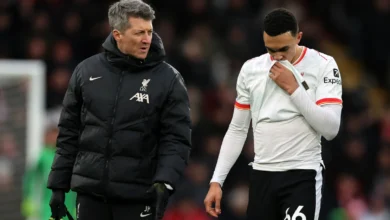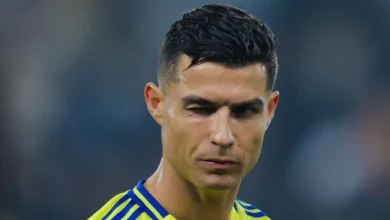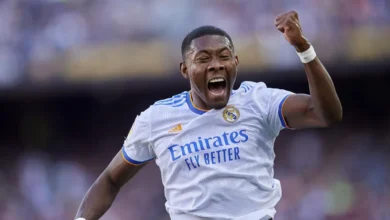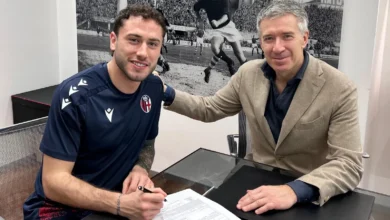Arsenal manager Mikel Arteta has outlined his approach to navigating the challenges posed by Bukayo Saka’s hamstring injury. With the star winger potentially sidelined for up to three months, Arteta has reaffirmed his commitment to leveraging the club’s academy talent and only considering external reinforcements if exceptional opportunities arise. This strategy highlights Arsenal’s long-term vision and resourcefulness in managing squad depth.
Mikel Arteta Confirms Arsenal’s January Transfer Plan After Bukayo Saka Injury
Bukayo Saka’s Injury: A Setback for Arsenal
Details of Saka’s Injury
Bukayo Saka, one of Arsenal’s most pivotal players, has been ruled out for up to three months following hamstring surgery. The injury, sustained during a critical phase of the season, has left fans and analysts questioning how Arsenal will cope without their star winger. Saka’s absence means Arsenal loses a player with exceptional attacking prowess, creativity, and work ethic.
Impact on Arsenal’s Performance
Saka has been instrumental in Arsenal’s success, contributing significantly to their offensive strategies. His ability to create chances, score goals, and track back defensively makes him irreplaceable. Without him, Arsenal faces a void on the right wing that could disrupt their rhythm and effectiveness in upcoming matches.
Arteta’s Academy-First Approach
Promoting Talent from the Academy
Mikel Arteta has turned to Arsenal’s renowned academy system to fill the gap. Ethan Nwaneri, a 17-year-old prodigy, has been given opportunities to step up. Despite being a natural midfielder, Nwaneri has shown remarkable adaptability in playing out wide. Similarly, 18-year-old Myles Lewis-Skelly has impressed at left-back, showcasing the academy’s depth and quality.
Arteta’s decision to rely on youth underscores his belief in nurturing homegrown talent. It’s a strategy that aligns with Arsenal’s philosophy of developing players internally, fostering loyalty, and reducing dependency on external transfers.
Versatility of Emerging Players
Nwaneri’s ability to adapt to multiple positions has been a revelation. Although his experience on the wing is limited, his performances have been mature and impactful. Lewis-Skelly, too, has transitioned seamlessly into a defensive role, proving that young players can thrive when given the right guidance and opportunities.
Arsenal’s January Transfer Window Strategy
Arteta’s Focus on Internal Solutions
Arteta has reiterated his preference for working with the existing squad before exploring the transfer market. His philosophy revolves around maximizing the potential of players already at his disposal. This approach not only saves resources but also builds team cohesion.
When External Recruitment Becomes Necessary
However, Arteta remains pragmatic. He acknowledges that if an extraordinary player becomes available in January, and the club can afford the transfer, Arsenal will consider strengthening their squad. This balanced approach ensures Arsenal remains competitive without compromising their long-term goals.
Tactical Adjustments in Saka’s Absence
Gabriel Martinelli’s Role on the Right Wing
To compensate for Saka’s absence, Gabriel Martinelli has shifted from the left to the right wing. While this adjustment demands versatility, Martinelli’s pace and creativity make him a suitable replacement. Arteta’s willingness to experiment with positions highlights his tactical acumen.
Rotational Strategy
Arteta is also keen on a rotational strategy to manage player fatigue. With a packed fixture list, relying on one player to fill Saka’s role is unrealistic. By rotating players based on opposition tactics and individual strengths, Arsenal can maintain consistency and minimize injuries.
Long-Term Implications for Arsenal
Strengthening the Academy System
This situation underscores the importance of a robust academy system. By integrating young players into the first team, Arsenal not only addresses immediate needs but also prepares for future challenges. The confidence shown in Nwaneri and Lewis-Skelly is a testament to the academy’s success.
Building Squad Depth for Future Challenges
Arteta’s reliance on academy players during Saka’s absence offers a blueprint for handling future crises. Investing in youth development and fostering a culture of adaptability ensures Arsenal remains resilient in the face of adversity.
Conclusion
Mikel Arteta’s approach to managing Bukayo Saka’s injury demonstrates a clear vision and strategic thinking. By prioritizing internal solutions and maintaining flexibility in the transfer market, Arsenal can navigate this challenging period effectively. The emergence of young talents like Ethan Nwaneri and Myles Lewis-Skelly is a silver lining, showcasing the club’s commitment to nurturing future stars. As Arsenal continues their campaign, Arteta’s balanced strategy will be crucial in determining their success.
FAQs
- What is the latest update on Bukayo Saka’s injury?
Saka is expected to miss up to three months following hamstring surgery. - How has Ethan Nwaneri performed in Saka’s absence?
Nwaneri has impressed with his versatility and maturity, adapting well to a new role on the wing. - Will Arsenal sign any players in the January transfer window?
Arteta has emphasized internal solutions but remains open to exceptional signings if needed. - How does Arteta plan to handle squad rotation?
By rotating players based on opposition tactics and player strengths, Arteta aims to manage fatigue and optimize performance. - What are the long-term benefits of Arteta’s academy-first approach?
It strengthens the academy system, fosters player development, and ensures Arsenal is prepared for future challenges.




